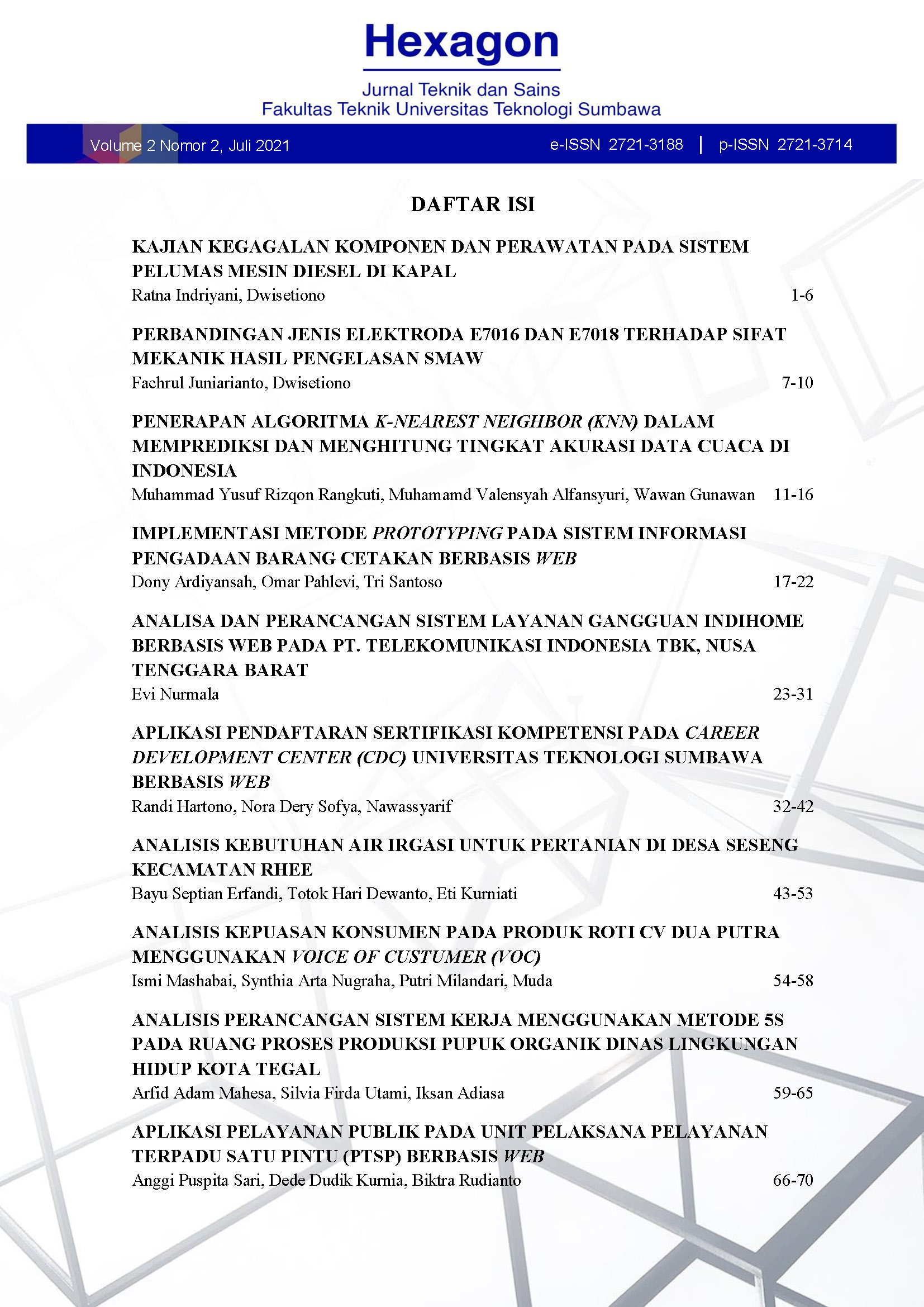ANALISIS PERANCANGAN SISTEM KERJA MENGGUNAKAN METODE 5S PADA RUANG PROSES PRODUKSI PUPUK ORGANIK DINAS LINGKUNGAN HIDUP KOTA TEGAL
DOI:
https://doi.org/10.36761/hexagon.v2i2.1088Keywords:
Working System Design, 5S MethodAbstract
Population growth plays a major role in increasing the amount of waste generated. One of the regions in Indonesia that has implemented a waste management system so that it can be utilized is Tegal City, through the Tegal city environmental office, the government strives to handle waste management, both organic and non-organic as well as hazardous waste. Tegal City Environment Office still found some problems such as the unavailability of warehouses to place goods or facilities that are rarely used so as to cause a waste of space, so that it can disturb workers and included in the waste of space. Therefore, the problem needs to be resolved. In the workaround the 5S method is used. The purpose of this research is to design 5S in an effort to reduce waste on waste management in the Tegal City Environment Office. Based on the data obtained, it is known that the area of organic waste management is 200 m2 with a length of 20 m and a width of 10 m. In this study, the work area of organic waste management will be designed 5S and provide a new layout proposal because in TPST Akhir Mintaragen Tegal City Environment Office has not implemented 5S so that the lack of organized equipment or facilities in the workspace. The conclusion of this study is that 5S has been designed to improve the work system at the Tegal City Environment Office and to address problems at the work site.
References
Cooper, C., Fletcher, J., Gilbert, D., & Wanhill, S. (1996). Konsep Pendidikan Lingkungan Hidup dan “Wall Chart”. Malang: PPPGT/VEDC.
Kuncoro, S. (2009). Pengolahan Sampah Terpadu. Yogyakarta: Kanisius.
Undang-undang Republik Indonesia Nomor 18 Tahun 2008 tentang Pengelolaan Sampah.
Manik. K. E. S. M. (2007). Pengelolaan Lingkungan Hidup. Jakarta: Kencana.
Artiningsih, N. K. A. (2008). Peran Serta Masyarakat dalam Pengelolaan Sampah Rumah Tangga (Studi kasus di Sampangan dan Jomblang, Kota Semarang). Semarang: Tesis, Universitas Diponegoro.
Devani, V. & Fitra, A. (2016). Analisis Penerapan Konsep 5S di Bagian Proses Maintenance PT. Traktor Nusantara. Jurnal Teknik Industri: Jurnal Hasil Penelitian dan Karya Ilmiah dalam Bidang Teknik Industri, 2(2), 113-120.
Rinawati, D. I., WP, S. N., & Lisano, N. (2016). Rancangan Penerapan 5S Guna Mereduksi Searching Time Pada Area 1 PT. XYZ. Jurnal Prosiding SNST Fakultas Teknik, 1(1), 23-34.
Imai, M. (1986). Kaizen: The Key to Japan’s Competitive Success. Tokyo: McGraw-Hill Education.
Published
Issue
Section
Copyright (c) 2021 Hexagon

This work is licensed under a Creative Commons Attribution 4.0 International License.



